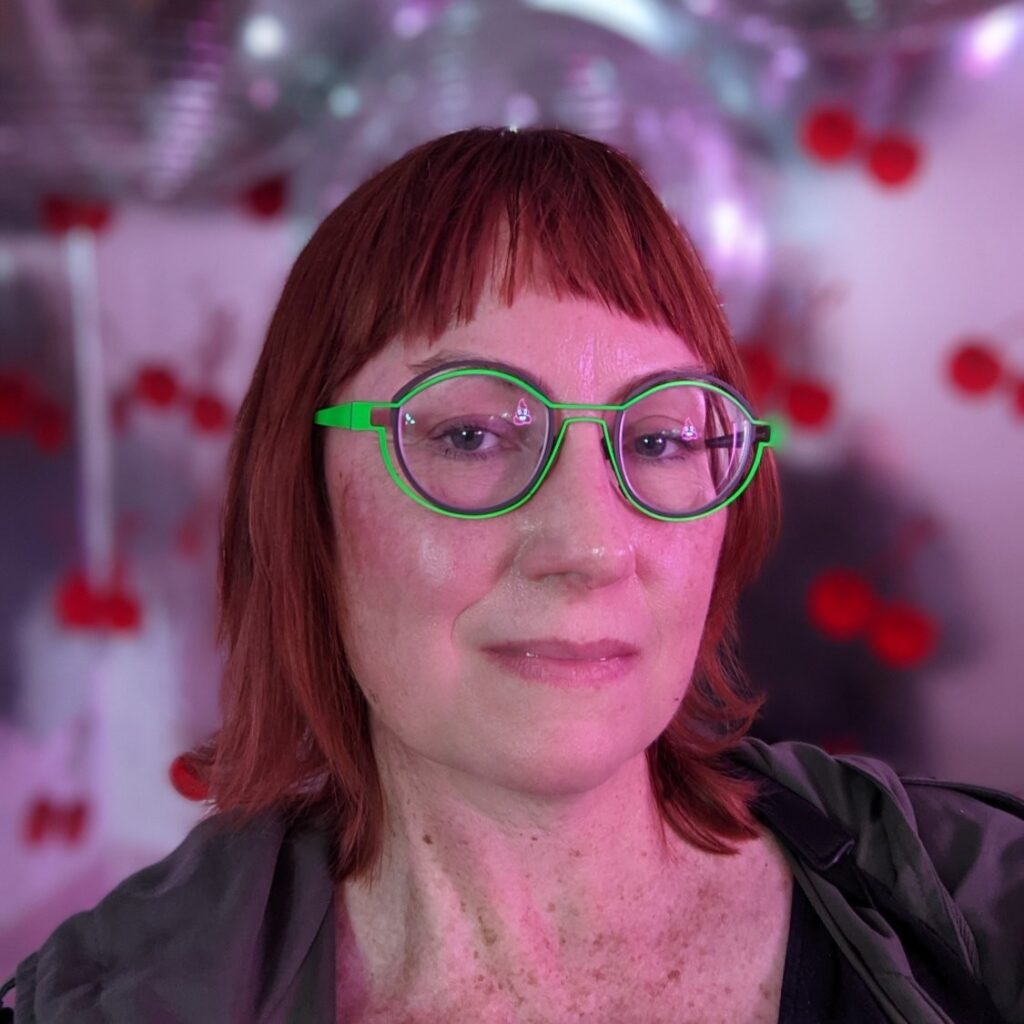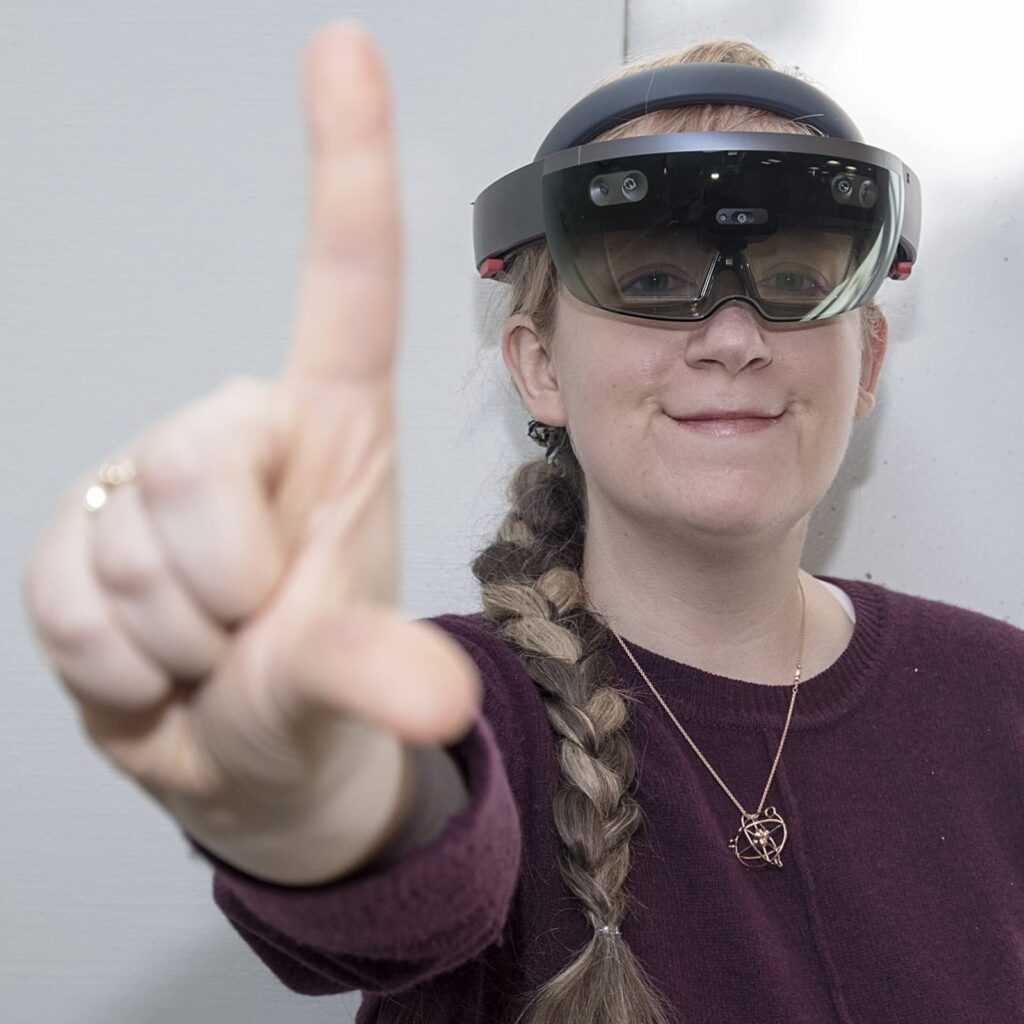Keynotes
What do image generators know?

David Forsyth
Abstract
Intrinsic images are maps of surface properties, like depth, normal and albedo.
I will show the results of simple experiments that suggest that very good modern depth, normal and albedo predictors are strongly sensitive to lighting – if you relight a scene in a reasonable way, the reported depth will change. This is intolerable. To fix this problem, we need to be able to produce many different lightings of the same scene. I will describe a method to do so. First, one learns a method to estimate albedo from images without any labelled training data (which turns out to perform well under traditional evaluations). Then, one forces an image generator to produce many different images that have the same albedo — with care, these are relightings of the same scene. I will show some interim results suggesting that learned relightings might genuinely improve estimates of depth, normal and albedo.
But if an image generator can relight a scene, it likely has a representation of depth, normal, albedo and other useful scene properties somewhere. I will show strong evidence that depth, normal and albedo can be extracted from two kinds of image generator, with minimal inconvenience or training data. Furthermore, all these intrinsics are much less sensitive to lighting changes. This suggests that the right way to obtain intrinsic images might be to recover them from image generators. It also suggests image generators might “know” more about scene appearance than we realize.
About the Speaker
Currently, David Forsyth is Fulton-Watson-Copp Chair in Computer Science at the University of Illinois at Urbana-Champaign, where he moved from UC Berkeley, where he was also a full professor. He has occupied the Fulton-Watson-Copp Chair in Computer Science at the University of Illinois since 2014. He has published over 170 papers on computer vision, computer graphics, and machine learning. He was the program co-chair for IEEE Computer Vision and Pattern Recognition in 2000, 2011, 2018, and 2021, the general co-chair for CVPR in 2006 and 2015 and ICCV in 2019, the program co-chair for the European Conference on Computer Vision in 2008 and is a regular member of the program committee for all major international conferences on computer vision. He served for six years on the SIGGRAPH program committee and is a regular reviewer for that conference. He has received best paper awards at the International Conference on Computer Vision and the European Conference on Computer Vision. He received an IEEE Technical Achievement Award in 2005. He became an IEEE Fellow in 2009 and an ACM Fellow in 2014. His textbook, “Computer Vision: A Modern Approach” (co-authored with J. Ponce and published by Prentice Hall), is widely adopted as a course text (adoptions include MIT, U. Wisconsin-Madison, UIUC, Georgia Tech, and UC Berkeley). A further textbook, “Probability and Statistics for Computer Science,” is in print; yet another (“Applied Machine Learning”) has just appeared. He has served two terms as Editor-in-Chief of IEEE TPAMI. He has served on several scientific advisory boards.
The physical future of digital games

Heather Kelley
Abstract
Heather Kelley is an award-winning game designer, media artist, curator and researcher. Her experimental game work focuses on unique sensory effects, integrating perceptions of touch, smell, movement, sound, and nervous system response. Since 2015 she has taught at the Entertainment Technology Center of Carnegie Mellon University, where she holds the title Associate Teaching Professor. She serves as the Sensory Director at the LIKELIKE gallery for independent games and playful arts. Ms. Kelley was named by Fast Company magazine as one of 2011’s thirty most influential women in technology, the same year that her innovative mobile app OhMiBod Remote won Best Application from Vienna Austria’s annual Content Awards. In 2012, she co-curated Joue le jeu, a groundbreaking 5000 m 2 exhibition of video games and commissioned play installations in Paris, France. In 2013, Microsoft Women In Gaming awarded her their Innovator Award. Ms. Kelley is a founder of the experimental game collective Kokoromi, with whom she produced and curated the renowned GAMMA events from 2006 to 2010, promoting experimental games as creative expression in a social context. In 2016 Kokoromi released the retrofuturistic VR puzzle game SUPERHYPERCUBE on the Sony Playstation 4. Ms. Kelley’s extensive career in game development has included design and production of touchscreen vibrator controllers, AAA next-gen console games, interactive smart toys, mobile and handheld games, research games, installation games, and web communities for girls. She holds a Master of Arts in Communication from the University of Texas at Austin.
About the Speaker
Behind the Eyes: The physical future of digital games For over fifty years, digital games have worked to perfect the relationship between players’ eyes and hands, with some attention to their ears. Sight and sound, the “wave-based” senses, are the easiest to digitize, store, codify, transmit, and reproduce. They are also the easiest to sell. In the last decade, however, there is a growing interest in how games can engage with our other senses, such as motion and smell. Some of this interest is certainly commercial–novelty and attention sells. But, there are many creators who are deeply interested in how these modalities can evoke emotions and responses that are difficult to achieve by other means. At the same time, medicine and science (particularly psychology) have begun to validate the deep importance of emotions and felt (somatic) sensations that are experienced first through our bodies, rather than our minds. These physical/neurological reactions are in direct contrast with the dissociated, body-removed state through which most entertainment is currently delivered. Societies are becoming increasingly aware of the negative social, psychological, and physiological effects of over-reliance on this kind of digital interaction. With our minds, bodies, and our natural world in peril, it seems ever-more pressing that we look up from our screens, breathe the air of the world, and teach young people a different set of values, no longer based on the disassociation that the first half century of entertainment technology have delivered to them.
As game designers, how can the tools at our disposal place our players more in tune with themselves and the world around them, rather than more removed? What is our responsibility as we work in a medium that can be deeply distracting and dissociative? This talk will be an examination of my sensory game design research, exploring how an expansion of gameplay into projects that engage with the senses, the body, and the environment might point a way forward for playful planetary survival.
Ethical, safe and inclusive XR technologies: the way forward

Ekaterina Prasolova-Førland
Abstract
Emerging technologies like XR, the Metaverse, and AI are set to transform education, raising numerous ethical challenges that remain unclear. Questions include the acceptability of using simulated torture in VR for teaching and resurrecting individuals in the Metaverse for educational purposes. The talk with outline existing ethical, privacy and inclusivity challenges associated with development and use of XR technologies, based on the preliminary results from the XR4HUMAN project and illustrate several ethical dilemmas by raising highly provocative questions with corresponding demos (trigger warning).
About the Speaker
Dr. Ekaterina Prasolova-Førland is Full Professor and Head of Innovative Immersive Technologies for Learning (IMTEL) research group and lab at the Norwegian University of Science and Technology. She has been working with educational virtual worlds and immersive technologies since 2002, with over 100 publications in the field. She has been involved in developing educational XR simulations for a wide range of stakeholders, including industry, hospitals, Norwegian Armed Forces and Labour and Welfare Administration. Ekaterina is Norway’s ambassador for Women in Immersive Tech.
AI Overview - Strategy and Applications in Digital Entertainment
Abstract
With 25 years of experience in emerging technologies and computer graphics, Pablo Bioni is a recognized leader in VFX, Virtual Production, and Emerging Technologies at MTL. As a former Innovation Manager at TV Globo, he conceived and managed the Effects and Virtual Production Studio, implementing graphic innovations in over 30 sports shows, news programs, soap operas, and films. A specialist in New Business, focusing on digital influencers, synthetic humans, and voice and image synthesis, Pablo is an active member of the Visual Effects Society (VES), Metaverse Standard Forum, and ACM.
Graduated in Computer Engineering from PUC-Rio, with a Master’s in Computer Vision, a Postgraduate degree in Digital Animation, and an innovation immersion at MIT Medialab, Pablo is the author of publications in renowned conferences such as SIGGRAPH and GTC. His career is marked by international awards, including New York Festivals and Cannes Lions, standing out for his innovative contributions and significant impact on the industry.Linkedin : https://www.linkedin.com/in/pablo-bioni/
Instagram : https://www.instagram.com/digitaltechart
About the Speaker
Innovations in artificial intelligence are revolutionizing the way we consume and produce content in the field of digital entertainment. This lecture will provide a comprehensive view of the evolution of content consumption and how AI is playing a crucial role in this transformation. We will discuss emerging technologies and their applications in leading companies in the sector and digital entertainment, showcasing concrete examples of innovative projects that are at the forefront of this movement. Join us to discover how the present and future of digital entertainment are being shaped.

Pablo Bioni
Enhancing Realistic Rendering for Mixed and Virtual Reality Games
Abstract
The video game industry continuously advances real-time rendering techniques, with an increasing focus on features like ray-tracing and global illumination. Additionally, VR/MR/AR games are pushing for high-quality rendering despite constraints such as high-definition displays (requiring many pixels), less powerful processors, and higher frequency requirements. This talk will present key optimization strategies, including hybrid denoising, foveated culling methods, optimization for foveated displays, and the usage of neural rendering approaches.
About the Speaker
Esteban is Full professor at Universidade Federal Fluminense and coordinator of UFF Medialab, CNPq researcher 1D, Scientist of the State of Rio since 2019. He is undergraduate in Computer Science by Universidade de São Paulo and has master and doctor degree by PUC-Rio. His main research and development area are Real Time rendering, Digital Games, Virtual Reality, GPUs. He is one of the founders of SBGames (Brazilian Symposium of Games and Digital Entertainment) and was the president of Game Committee of the Brazilian Computer Society from 2010 through 2014. He is the general chair of the IFIP TC14 (Entertainment Computing). Esteban is also one of the founders of ABRAGAMES. In 2015 he was nominated as NVidia CUDA Fellow. Esteban is member of the program committee of most digital entertainment conferences. Esteban has 66 journal papers and 224 conference papers published up to now. In 2024 he is the Program chair of the ACM High Performance Computing and General chair of the IFIP International Conference on Entertainment Computing. In 2023 Esteban received the SBGames Award for his life career.

Esteban Walter Gonzalez Clua
Game Design in the Construction of (In)Visible Narratives
Abstract
A non-binary person, Game Designer, and Researcher at Sidia – Institute of Science and Technology, Nickie has over 10 years of experience as a developer of both digital and analog games. Their professional background includes expertise in areas such as arts, engineering, technology management, and natural sciences. Nickie is a leader in national and international gaming communities, the founder and leader of the first Game Developers Association of Amazonas (AGD), as well as a Global Leader and Producer for the largest gender-focused event in the world: Women Game Jam and We Game Jam.
https://www.linkedin.com/in/nickiemaxine
About the Spaeker
This lecture aims to highlight the importance and best practices of game design from an emotional, social, and cultural narrative perspective, considering aspects of inclusion and diversity that should be taken into account during game development and creation.

Nickie Maxine
Programação KeyNotes
1/10/2024
11h – 12h
Keynote: David Forsyth
SBGAMES – SVR – SIBGRAPI
[Auditório EST – Bloco C + Transmissão YouTube Auditório STEM]
17h – 18h
Keynote Internacional: Heather Kelley
SBGames + ICEC
[Auditório STEM – 1o andar]
2/10/2024
11h – 12h
Keynote Internacional: Ekaterina Prasolova-Førland\
SBGames/SVR – 2024
[Auditório EST – Bloco C]
15:30h – 16:30h
Keynote: Pablo Bione
SBGames + ICEC
[Auditório EST – Bloco C]
18h – 19h
Keynote: Esteban Clua
SBGames (Homenageado 2023) + SVR + SIBGRAPI
[Auditório EST – Bloco C]
3/10/2024
11h – 12h
Keynote: Nickie Maxine
SBGames + ICEC
[Auditório EST – Bloco C]
